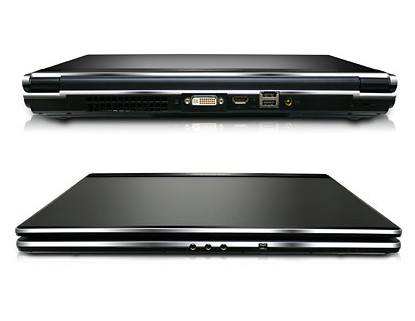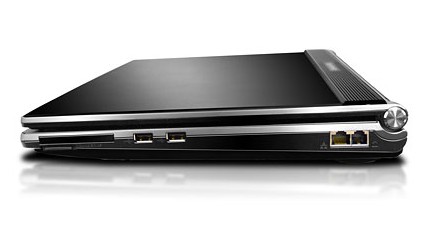Ibuypower Battalion 101 M865TU
Specifications

Price comparison
Average of 3 scores (from 3 reviews)
Reviews for the Ibuypower Battalion 101 M865TU
Source: Maximum PC
 Archive.org version
Archive.org versionWhat we like about the M865TU is that it provides decent application performance, a marked improvement in single-card notebook gaming, and a more portable size and weight—it’s lighter by two or more pounds than other gaming notebooks we’ve tested recently. Sadly, its battery life isn’t much better than the pack’s, lasting just one hour and 40 minutes when playing a movie in power-saving mode. Oh, and the speakers suck.
Single Review, online available, Short, Date: 11/02/2009
Rating: Total score: 80%
Source: Laptop Mag
 Archive.org version
Archive.org versionThe iBuyPower Battalion 101 (M865TU) offers top-of-the-line gaming performance, even at its high native resolution. However, for over two grand, we wish that iBuyPower had paid as much attention to its notebook’s build quality and design as it did the hardware. The ASUS G51v costs about half as much, yet still provides reasonable performance in a far more interesting chassis. Nevertheless, if you want a powerful gaming laptop you can take with you, the iBuyPower Battalion 101 is worth a look.
Single Review, online available, Long, Date: 08/27/2009
Rating: Total score: 60%
Source: Computer Shopper
 Archive.org version
Archive.org versionNearly all of today’s powerful gaming notebooks have at least one thing in common: They are typically bulky, desktop replacement–size systems that can weigh upwards of 11 pounds. The iBuypower M865TU ($2,049 list), on the other hand, is different. It delivers gaming-class power in a 15-inch chassis that won’t break your back. Unfortunately, you’ll have to lug around the power adapter, too, because this system’s battery life is woefully short. This gaming laptop offers solid performance and above-average connectivity in an uncommonly portable 15-inch frame. The battery life is subpar, however.
Single Review, online available, Medium, Date: 07/01/2009
Rating: Total score: 78%
Comment
NVIDIA GeForce GTX 260M:
The Nvidia GeForce GTX 260M is essentially a higher clocked GeForce 9800M GTX based on the G92b core built under a 55nm manufacturing process. Because of the architectural difference, the 260M is less powerful (and quite dissimilar) to the similarly named desktop GeForce GTX 260.
Modern games should be playable with these graphics cards at low settings and resolutions. Casual gamers may be happy with these cards.
» Further information can be found in our Comparison of Mobile Graphics Cards and the corresponding Benchmark List.
Intel Core 2 Duo: This is the Core Duo and Core Solo successor with a longer pipeline and 5-20% more speed without more power consumption. As an addition to the Core Duo design there exists a fourth decoder, an amplified SSE-unit and an additional arithmetical logical unit (ALU).
The Core 2 Duo for laptops is identical to the desktop Core 2 Duo processors but the notebook-processors work with lower voltages (0.95 to 1188 Volt) and a lower Frontside bus clock (1066 vs 667 MHz). The performance of equally clocked notebooks is 20-25% lower than Desktop PCs because of the lower Frontside bus clock and the slower hard disks.
P8700:
Mid-range dual core processor with 3 MB level 3 cache and a TDP of 25 Watt.
» Further information can be found in our Comparison of Mobile Processsors.














